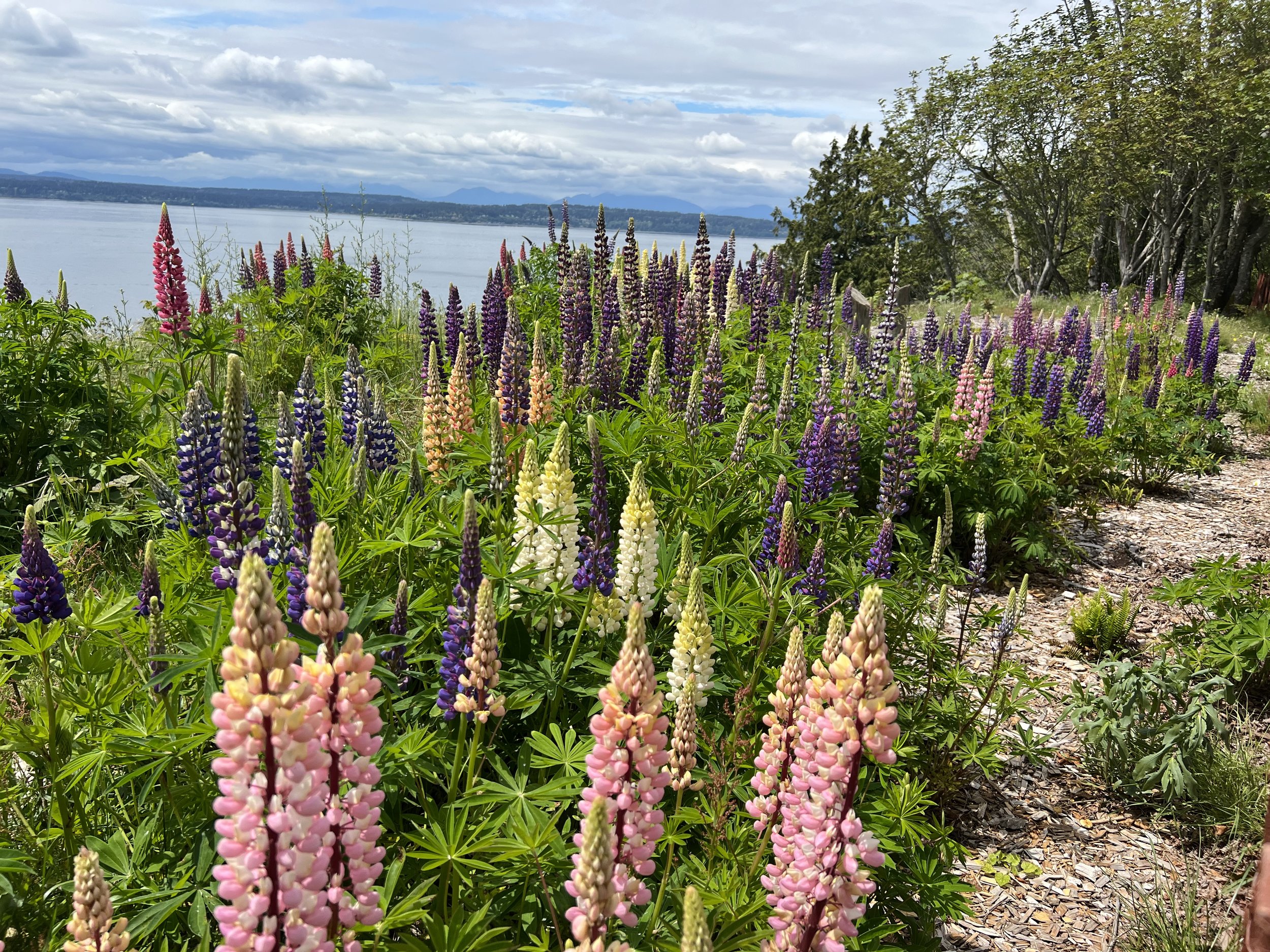
Basics to the process
-
Invasive species removal
Invasive species such as English ivy and Himalayan blackberry pose a great threat to PNW ecosystems as they hinder natural successional processes, killing existing native trees and plants and preventing seedlings from establishing, eventually forming mono cultures where no other species can survive.
-
Erosion Control
Some sites require erosion control. Erosion control can include the creation of windrows using available woody debris, use of biodegradable landscape material like coir fabric, and the installation of numerous native plants to control erosion and minimize soil loss with their root systems.
-
Mulching
Mulching is an essential part of the restoration process as it minimizes invasive species regrowth, keeps moisture in the soil and near plants, aids fungal networks, and adds essential organic material and nutrients to the soil as it breaks down.
-
Native species installation
Native plants create critical wildlife habitat, providing food and shelter for birds, mammals, and insects, as well as providing crucial support for pollinators like bees and butterflies. In addition to being a vital part of the food web, native plants also contribute to soil health, help reduce erosion, and improve air and water quality.
-
Maintenance
Maintenance is a key part of any restoration projects success. Weeding and watering during the establishment period ensure higher survival rates and healthier plants.
-
More
We are happy to work with you to customize a restoration plan that we can fulfill, or help you learn the basics to do it yourself.